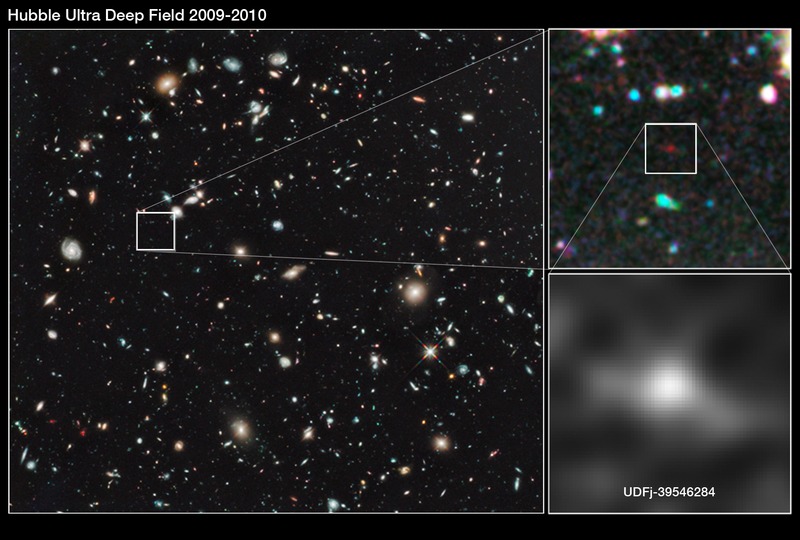Added 1 new A* page:Well continuing the theme of space extremes from yesterday, I also recently came across what might be the oldest galaxy human science has found so far: UDFj-39546284, which *may* have been a galaxy of blue stars 13.2 billion years ago, just 480 million years after the Big Bang; I say "may" because it hasn't yet been spectroscopically confirmed, so it could be a galaxy of red stars much closer to Earth, if the interpretation of the Hubble Ultra Deep Field data was incorrect. Anyway, here it is:

image by NASA (source)
If it *is* that old, then according to the above-linked Wikipedia article, it's a bit of a surprise, since, comparing it with galaxies we can observe from several hundred million years later, it implies that star birth increased by a factor of ten during that time.
It's also a nice demonstration of red shift: a galaxy that old would *only* be visible in the Hubble survey if it was bright blue stars to begin with, because the huge redshift caused by the expansion of the universe since that time would have rendered any other visible wavelength invisible. To look much further back than that, you'd need a telescope that sees in infrared, like the upcoming James Webb Space Telescope, due to be launched toward a solar orbit in 2014 or 15.
|
